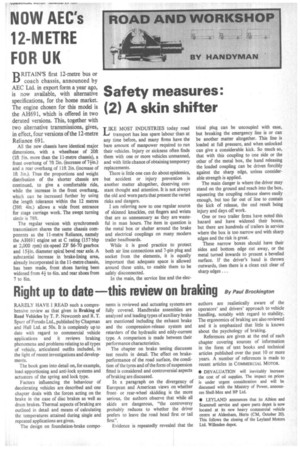Safety measures: (2) A skin shifter
Page 43

If you've noticed an error in this article please click here to report it so we can fix it.
EKE MOST INDUSTRIES today road transport has less spare labour than at any time before, and many firms have the bare amount of manpower required to run their vehicles. Injury or sickness often finds them with one or more vehicles unmanned, and with little chance of obtaining temporary replacements.
There is little one can do about epidemics, but accident or injury prevention is another matter altogether, deserving constant thought and attention. It is not always the old and worn parts that present the varied risks and dangers.
I am referring now to one regular source of skinned knuckles, cut fingers and wrists that are as unnesessary as they are wasteful in man hours. The item in question is the metal box or shelter around the brake and electrical couplings on many modern trailer headboards.
While it is good practice to protect both air line connections and 7-pin plug and socket from the elements, it is equally important that adequate space is allowed around these units, to enable them to be safely disconnected.
In the main, the service fine and the elec trical plug can be uncoupled with ease, but breaking the emergency line is or can be another matter altogether. This line is loaded at full pressure, and when unlocked can give a considerable kick. So much so, that with this coupling to one side or the other of the metal box, the hand releasing the loaded coupling can be driven forcibly against the sharp edge, unless considerable strength is applied.
The main danger is where the driver may stand on the ground and reach into the box, squeezing the coupling release sleeve easily enough, but too far out of line to contain the kick of release, the end result being injury and days off work.
One or two trailer firms have noted this hazard and have widened their boxes, but there are hundreds of trailers in service where the box is too narrow and with sharp edges and the risk is great.
These narrow boxes should have their sides and bottom edge cut away, or the metal turned inwards to present a bevelled surface. If the driver's hand is thrown outwards, then there is a clean exit clear of sharp edges ...












































































































































